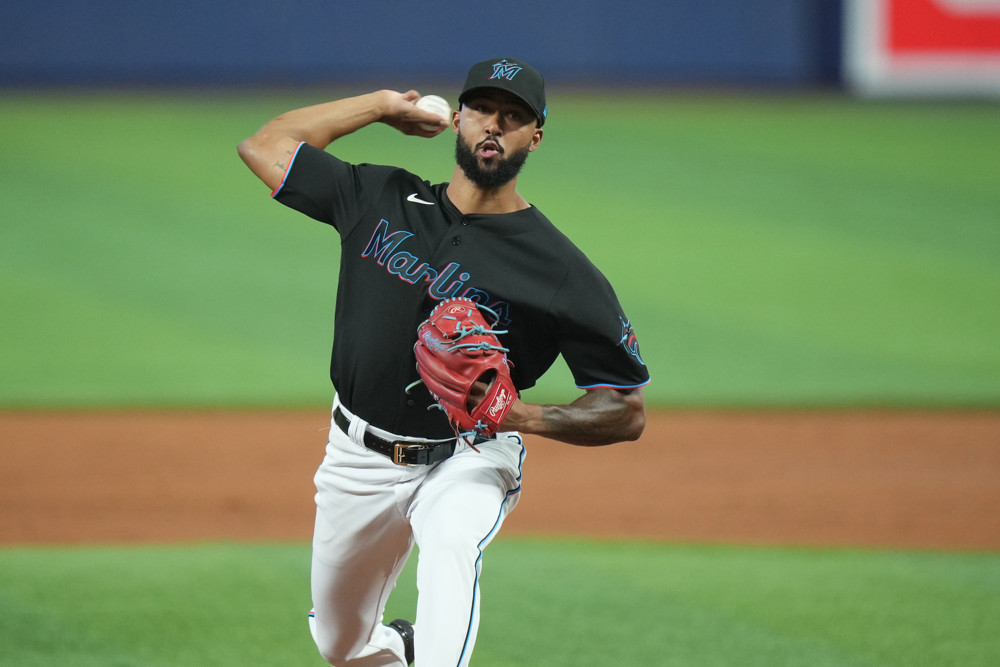By TED BAARDA
“It will balance itself out,” is a commonly quoted saying among baseball people when a player gets robbed of a hit. And for the most part, in a large enough sample, that will roughly hold true. However things rarely balance out perfectly, and that disconnect in baseball is often regarded as ‘luck’ or randomness.
There are some stats that can be used to support a claim that a hitter is lucky or unlucky. BABIP is one of the original luck indicators, but more recent stats like xBA, which focuses on quality of contact, have tried to determine what a player’s “true talent” batting average should have been based on what a hitter did at the plate.
I wanted to try a similar approach, but instead focused on the question from a defensive perspective. Using our Good Fielding Play (GFP) and Defensive Misplay (DM) data, we can adjust a player’s batting average for exceptionally good or bad defensive plays made against them.
Imagine an alternate reality where defenders are perfectly sound fundamentally, but are unable to make exceptional plays to rob players of hits
Imagine an alternate reality where defenders are perfectly sound fundamentally, but are unable to make exceptional plays to rob players of hits, and that’s the environment in which we are judging hitters.
Admittedly, this alternate reality sounds quite boring. But let’s give it a try.
The model is quite simple: if a player was robbed of a hit by an exceptional defensive play, we are now giving them theoretical credit for a hit.
If a player is credited with a hit but was aided by a defensive blunder, they now are not credited with that hit.
If a player is credited with a hit but was aided by a defensive blunder, they now are not credited with that hit.
Calling this new average “Fielding Play Adjusted Average” (FPAA), we can compare it to a player’s actual average and determine who is getting lucky or unlucky based on the plays made against them.
This model has a few differences from xBA (expected batting average) that are worth pointing out.
There are a couple of different versions of xBA. The version you see on Statcast focuses solely on how hard a ball was hit and it’s launch angle, but that ignores the effects of fielder positioning and shifting.
The reasoning for this is that xBA removes defense from their equation entirely, since hitters “have no control over what happens to a batted ball once they put it in play.” This isn’t fully true though, as hitters will have a tendency to hit the ball to some areas of the field more than others.
Hitters who pull the ball a lot, for example, will have more defenders set up where they hit the ball more often. This makes turning those balls into outs easier, and will drive down a hitter’s batting average and FPAA, since great plays are less likely to be necessary due to better positioning.
Conversely, hitters who spray the ball around the whole field are less likely to be shifted, which opens up more holes and gives them a chance to hit for a higher average and FPAA.
Another difference is in how they handle foul balls. The advantage of using our Defensive Misplay data is that we have some DMs that are assigned for foul balls that should have been caught but were not, which are ignored from xBA calculations.
For foul balls with a DM, FPAA credits an extra at-bat to the hitter. So if a hitter hits a foul ball that is missed due to a misplay, but recovers to get a hit, our stat will treat that AB as the hitter going 1-for-2.
If a hitter is robbed on a foul ball, FPAA will take away an AB from the hitter, basically treating that plate appearance as a 0-for-0.
You can find the data for all players with at least 300 at-bats here.
Here are the luckiest hitters this season by FPAA (minimum 300 AB):
Luckiest Hitters in MLB
| Batter | Actual_AVG | FPAA | Diff |
| Victor Robles | .204 | .177 | .027 |
| Gregory Polanco | .208 | .182 | .026 |
| Starling Marte | .308 | .285 | .024 |
| Juan Lagares | .236 | .214 | .022 |
| Josh Rojas | .264 | .244 | .021 |
| Harold Ramirez | .268 | .248 | .021 |
| Abraham Toro | .239 | .218 | .021 |
It is a little surprising to see players who struggled so much this season, in Robles and Polanco, as the ‘luckiest’ hitters in baseball.
Here’s one example of what were talking about as it relates to Robles. The pitcher being slow to cover the base eliminated any chance of it being an out. We score it a Defensive Misplay. The official scorer scores it a hit.
And this was scored a hit too. A tough play yes, but since the center fielder got his glove on it, it’s a Defensive Misplay in our accounting.
There are some possible explanations that can explain how certain players can be more prone to being lucky than others.
For instance, ground balls are inherently more difficult to turn into outs since they require a ball to be fielded and usually thrown to a base in less time than the average fly ball is in the air.
Marte and Ramírez both take advantage of that, with ground ball rates above 50%. In addition, having good speed, like Marte and Robles, can put more pressure on the defense to handle the ball quickly and cleanly, which can force extra miscues.
At the opposite end of the spectrum, we have the unluckiest hitters:
2021’s Unluckiest Hitters
| Batter | Actual_AVG | FPAA | Diff |
| Eugenio Suarez | 0.198 | 0.226 | -0.028 |
| Maikel Franco | 0.210 | 0.233 | -0.023 |
| Sean Murphy | 0.216 | 0.239 | -0.022 |
| Carson Kelly | 0.240 | 0.258 | -0.018 |
| Dansby Swanson | 0.248 | 0.266 | -0.017 |
| Joey Wendle | 0.265 | 0.282 | -0.017 |
| Jonathan Villar | 0.249 | 0.266 | -0.017 |
Like with the lucky hitters we can point to some similarities among the three unluckiest hitters, as none are particularly fast, and as power hitters they are typically trying to hit more balls in the air than on the ground. However Swanson and Villar do not fall into that category of hitter.
Another way we can try to evaluate luck is just by looking at the raw hits robbed or hits “gifted”.
While Eugenio Suárez is the unluckiest hitter by FPAA, Kevin Newman has been robbed of the most hits this season with 17, though Suárez is second with 16.
Newman, however, has received 10 gifted hits (or hits due to a DM) on the season, compared to just 2 for Suarez.
Here’s one of Suarez’s tough-luck outs.
In terms of the gifted hits leaders, there is a three way tie at 17 for Mark Canha, Whit Merrifield and Alex Verdugo. Merrifield and Verdugo have also been robbed a lot (13 and 14 times respectively), so they didn’t get the same bump in FPAA that Canha, who was robbed only 7 times, received,
Here’s an example of a play that was ruled a hit for Canha but rightfully scored a Defensive Misplay.
Looking at this data, it serves as a reminder that “luck” does seem to be randomly distributed. It tends to stand out more when a player performing poorly has bad luck, or a player performing well has good luck, but players can have good luck in a bad season, or bad luck in a good season. Luck is also a subjective topic, as there are different ways to interpret luck.
FPAA suggests that during a full season, the luck does tend to even out somewhat, as the vast majority of players had a difference between their batting average and FPAA of less than .020. Lowering the at-bat threshold gives larger outliers (especially among pitchers hitting), but no player with 50 AB had a difference between their batting average and FPAA greater than .050.
You can find data for all players with 300 at-bats here.


